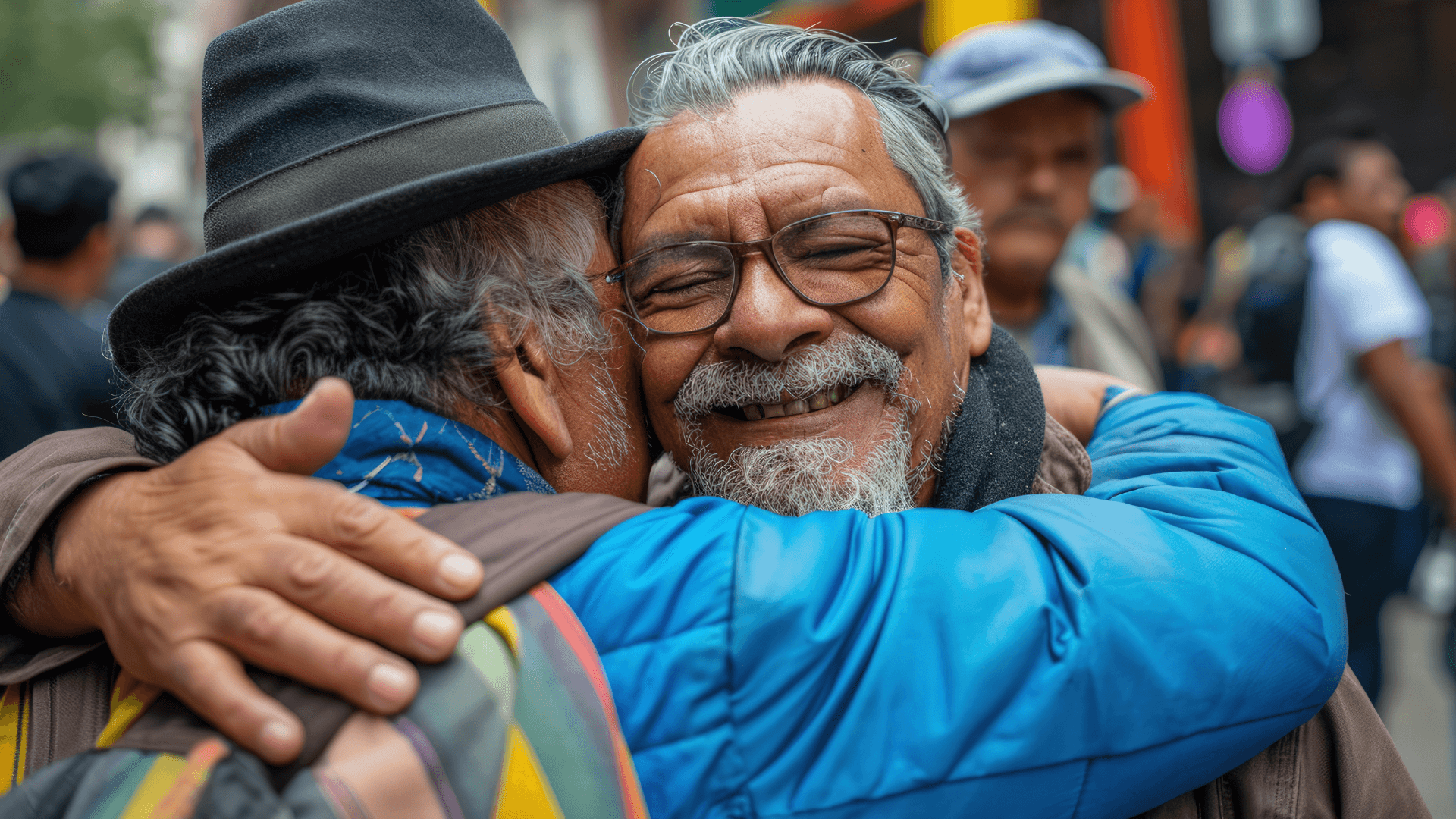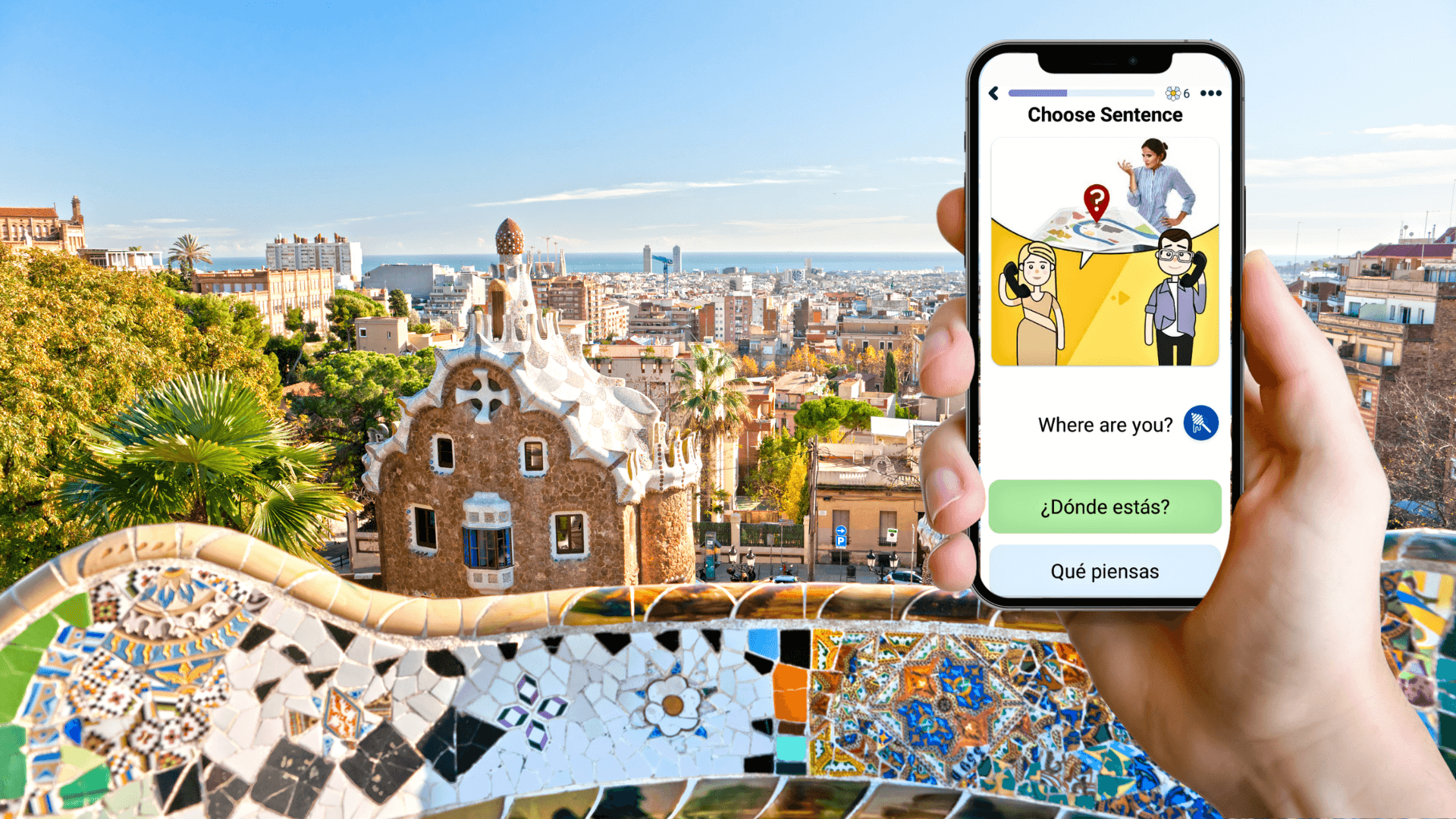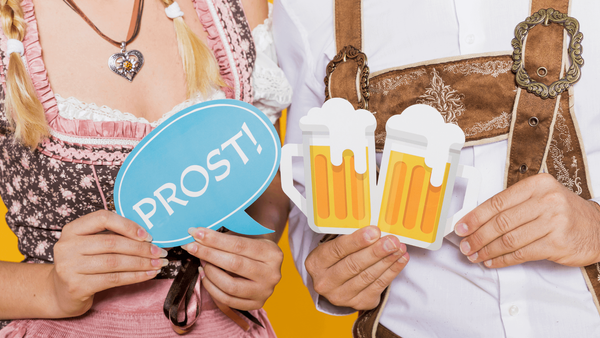How to Say Hello in Spanish

Greetings are particularly important in the Spanish culture, regarded by locals as social rituals and a display of politeness. When you're in a Spanish-speaking country, you need to choose between using formal or informal greetings and accompany them with a form of physical touch, if appropriate. A handshake, a hug, a pat on the back, and cheek kisses are all common, depending on the level of formality you're going for. Let's explore the most popular greetings in Spanish and see when they are best used.
Formal, Informal, and Casual Greetings
On a scale from serious, official conversations to talking with a pal, you can choose from formal, informal, and casual greetings. The more familiar you are with the person you're communicating with, the more casual your greetings typically are.
Formal Greetings
Formal greetings are meant for professional contexts or when you don't know the people you're talking with. They are also preferred when addressing older people, as a form of respect. Men usually accompany greetings with a firm handshake. In formal greetings, speakers use the pronoun "usted" instead of the more informal "tú."
- Buenos días - Good morning
- Buenas tardes - Good afternoon
- Buenas noches - Good evening/night
- Hola, ¿cómo está (usted)? - Hello, how are you? (formal, singular)
- Hola, ¿cómo están? – Hello, how are you? (plural, formal).
- Mucho gusto - Nice to meet you
- Encantado (if you're a man)/ Encantada (if you're a woman) - Pleased to meet you
- ¿En qué le puedo ayudar? – How may I assist you? (used in service or professional contexts).
Formal greetings often involve the use of titles such as "Señor" (Mister), "Señora" (Missis, Ma'am), and "Señorita" (Miss). Keep in mind that "Señora" is also used for older women, even if they're not married, to show respect. In fact, if you're not sure which option to use, "Señora" is your safest bet when it comes to adult and older women. Avoid addressing Spanish women by their first name unless you're prompted to do so. A first-name basis with a woman you just met is considered rude in Spanish-speaking cultures. A unique honorific title is "Don" (Sir), a respectful title used before the first or full name of an elder man of status.
Informal Greetings
Informal greetings are generally used with peers, work colleagues, and people you know relatively well. Informal greetings are somewhere between polite and friendly. They keep interactions relaxed without being overly formal. The pronoun "tú" reflects the informal tone.
- Hola - Hello or Hi. "Hola" is the most popular Spanish greeting. It is also the most versatile one, as it can be combined with other phrases to get more complex greetings, for instance, "Hola, buenas tardes!". Keep in mind that the "h" is silent.
- Hola, ¿cómo estás? – Hello, how are you?
- ¿Qué tal? – What’s up? / How's it going?
- Buen día – Good day
- "¿Cómo te va?" / "¿Cómo andas?" / "¿Qué me cuentas?"
- Encantado de verte – Nice to see you
- ¿Qué pasa? – What’s happening?
Casual Greetings
Casual greetings are to be used with close friends and family and are common in relaxed everyday settings. They are the preferred greetings of young people and often carry slang elements. Casual greetings can be colorful due to regional variations.
- ¡Ey! – Hey!
- ¿Qué onda? – What’s up? (common in Latin America)
- ¡Qué chido! – How cool! (used as a greeting in Mexico)
- ¿Cómo andas? – How are you doing?
- ¡Qué bueno verte! – Great to see you!
- ¿Qué pasa? - What's up?
- ¿Cómo va todo? - How's it going?
- ¿Qué hay de nuevo? - What's new?
- Playful variations of Hola are also common, especially among younger people. Some of them are listed below:
- ¡Hola, hola!
- ¡Oye!
- ¡Ey!
- ¡Holi!
All of these casual greetings are translated as "Hey" and accompanied by exclamation marks in texts and social media.
Choose how to say "hello" in Spanish depending on the degree of familiarity between yourself and the people you're addressing. Be mindful of regional slang to ensure your greeting sounds natural.
card-block
Spanish Greetings for Different Times of the Day
Just like English, Spanish calls for a diversity of greetings in the morning, afternoon, evening, and night. However, the concept of time is slightly different from that in English-speaking countries. For instance, you can hear "Buenas tardes" at 7 or 8 PM in summertime, and "Buenas noches" after sunset. The same greetings are used earlier in the day during winter. Another important detail to remember is that Spanish-speaking communities tend to enjoy their lunches for longer, and have longer evenings and later dinner times. For that reason, the concept of "tarde" (afternoon) spans a more extended period compared to English-speaking countries.
Saying "hello" in Spanish depends on the time of day.
- Buenos días – Good morning.
This greeting is typically used from midnight to noon.
- Buen día – Translated literally as "good day," the phrase"Buen día" is used as a less formal variation of "Buenos días."
The greeting is popular in Latin America, especially Argentina and Uruguay.
- Buenas tardes – Good afternoon.
Buenas tardes is typically used from noon or early afternoon until sunset. The time frame is often extended in tropical climates, since evenings start later.
- Buen atardecer – Good afternoon or good evening.
This option is not as popular and is only used in some Latin American regions during twilight.
- Buenas noches – Good evening or good night.
You say "Buenas noches" after dusk.
- Feliz noche – Goodnight.
Literally translated as "Happy night," this is a less common but warm evening greeting, used to wish someone a good night.
Spanish Greetings in Different Spanish-Speaking Countries

Spanish greetings differ across regions, influenced by local lifestyles. Phrases such as "Hola" (Hello), "¿Cómo estás?" (How are you?), and "¿Qué tal?" (What's up?) are all common in most Spanish-speaking countries. You can use them in any destination. However, when it comes to informal greetings, the kind you use with acquaintances, friends, and family members, each country has its unique greetings.
In Spain, you can hear "¿Qué hay?" (What's up?) and "¿Qué pasa, tío/tía?" (What's up, dude/girl?). Both are very casual, typically used only with the closest people. Mexico has "¿Qué onda?" (What's up?) and "¿Qué hubo?" (What happened? What's up?) - two very casual greetings. Argentina also boasts its unique informal greetings. One of them is "¿Qué hacés?" (What are you doing?), using the "vos" form. Another local phrase is "Che" (Hey), which is an attention-grabber, often used with friends right before a greeting. If you're planning a trip to Colombia, you may hear greetings such as "¿Quiubo?" (What's up?), which is a contraction of "¿Qué hubo?," literally translated as "What was there?" Another Colombian greeting is "Hola, parcero" (Hi, buddy).
Chile's warm social culture is reflected in the friendly "¿Cómo estái?" (How are you?), derived from the Spanish "¿Cómo estás?" (How are you?), with a Chilean conjugation, using "estái" instead of "estás." Although it translates as "How are you?", the phrase is more of a greeting rather than a question. Last, but not least, Costa Rica's "¡Pura vida!" (Pure life / All good) is more than just a greeting; it's an entire philosophy, reflecting the Costa Rican positive, laid-back lifestyle and the connection with nature. Moreover, "¡Pura vida!" is also used to mean "Goodbye" or as a reply to "¿Cómo estás?" (How are you?). Other uses of this versatile phrase include showing agreement, encouraging someone close, or expressing gratitude.
Spanish Greetings and Body Language
Physical touch is essential to native Spanish speakers, and greetings are no exception. One of the first things you may notice in Spanish-speaking cultures is the smaller personal space. People tend to stay closer together during conversations compared to other cultures. Proximity is a sign of warmth and openness without being too intimidating.
Saying "Hola" or "Buenos días" usually involves a handshake or cheek kisses. The double cheek kiss is popular with friends and even acquaintances in female-to-female or female-to-male interactions. It is customary to start with the right cheek, followed by a kiss on the left one. In some Latin American countries, it is customary only to kiss one cheek - the right one. Smiles and gestures are also ordinary for Spaniards, together with a warm, enthusiastic tone.
Keeping eye contact during greetings and full conversations in Spanish is expected, as long as you don't overdo it. Maintaining eye contact when greeting and speaking with someone is a sign of politeness and attentiveness, and is very much encouraged.
Learn Spanish with FunEasyLearn

Spanish is one of the most popular courses on FunEasyLearn, appealing to learners worldwide. Learn Spanish as an absolute beginner or jump onto the next level from any of the 62 native languages. Robust features include a smart review system, over 300,000 native speaker audio files, a convenient Child mode, hands-free functionality, and custom Favorite lists. Other features you can enjoy include the following:
- An extensive database of courses. All 34 courses in the app are based on the Lexical Approach to language learning, which prioritizes high-frequency vocabulary. The principles of this approach allow learners to understand everyday words, phrases, and expressions. That, in turn, stimulates communication faster.
- More than 30 educational games. Language learning can be entertaining, especially when it's done through fun games. Memorize Spanish words faster and for longer with engaging activities that help you learn in a relaxed environment.
- A personalized learning experience. With FunEasyLearn, you have unrestricted access to all the topics, currently counting over 350 topics and subtopics. Feel free to explore them in order or jump ahead to master words, phrases, and expressions for a particular subject.
Do you want to learn more Spanish beyond saying "Hello?"




